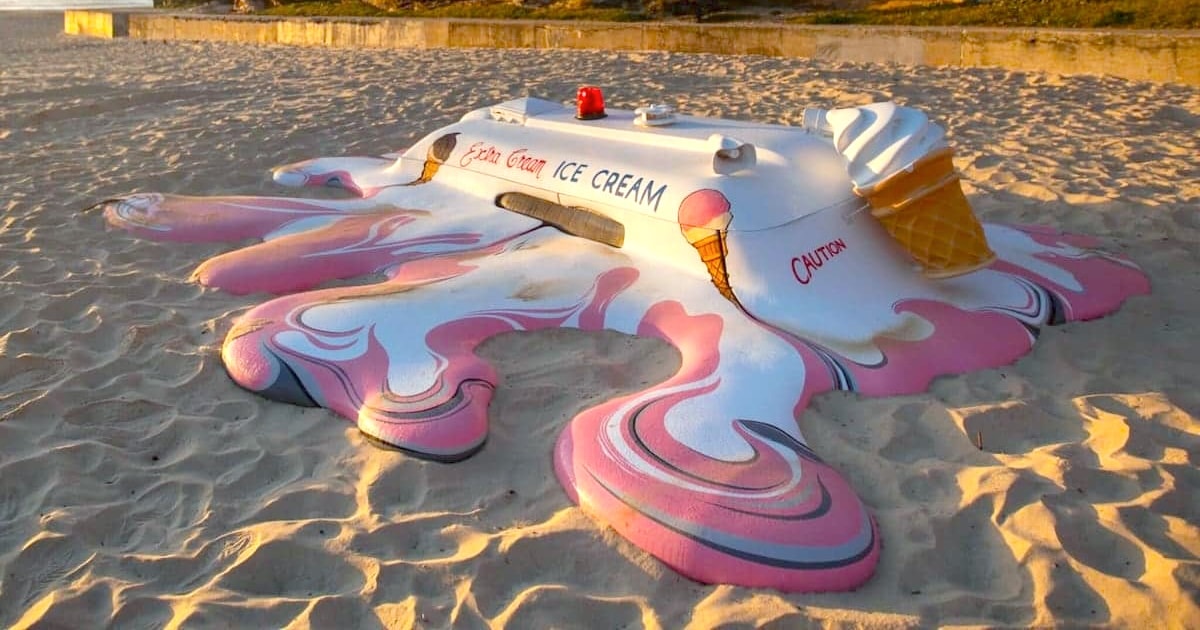Un hombre que camina (A Man Walking)
- Film & Video (Film & Video)
Enrique Ramirez
In Un Hombre que Camina (A Man Walking) (2011-2014), the sense of rhythm and timing is overpowered by the colossal sense of timelessness of this peculiar place. Shot in Uyuni, Bolivia, the film depcits world’s largest salt flat, a site that sits in a mountainous region at over twelve thousand feet above sea level. Ramirez’s work is deeply invested in the loss of regional identity, and the anachronistic dress of his “modern-day shaman” in the film is meant to reconcile the historical and cultural gaps between tribal traditions of a specific time and place and the all-too-prevalent homogeneity brought on by advanced capitalism. His festive yet ominous ceremonial mask, by extension, functions as a relic of colonial resistance: made by native coal miners to ward off Spanish invaders, the mask signals a need both past and present to preserve rituals passed down through future generations and across cultural genealogies.
Enrique Ramirez’s highly politicized practice engages both personal recollections and gathered stories, questions notions of exile, displacement, loss of memory, and a changing sense of place. Growing up in Santiago, Chile, his father was a sail-maker and Ramirez’s process often returns to the sea to bolster his investigations of movement, discovery, and geo-politics. The artist describes art and filmmaking as methods to communicate the ways society moves in cycles, sometimes backward and sometimes forward, especially regarding issues of immigration, border politics, and national identity. His seductive films and installations are sites of contemplation and imagination in their depiction of boundless space and expansive landscapes.
Colors:
Related works featuring themes of: » Black-and-White Photography, » Collective History, » Color Photography, » Conflict, » Chilean
» see more

© » KADIST
Shilpa Gupta
2014These hand drawn maps are part of an ongoing series begun in 2008 in which Gupta asks ordinary people to sketch outlines of their home countries by memory...

© » KADIST
Shilpa Gupta
2008The three monkeys in Don’t See, Don’t Hear, Don’t Speak are a recurring motif in Gupta’s work and refer to the Japanese pictorial maxim of the “three wise monkeys” in which Mizaru covers his eyes to “see no evil,” Kikazaru covers his ears to “hear no evil,” and Iwazaru covers his mouth to “speak no evil.” For the various performative and photographic works that continue this investigation and critique of the political environment, Gupta stages children and adults holding their own or each other’s eyes, mouths and ears...

© » KADIST
Bani Abidi
2012The perceived effortlessness of power, projecting above experiences of labored subordination is examined in Death at a 30 Degree Angle by Bani Abidi, which funnels this projection of image through the studio of Ram Sutar, renowned in India for his monumental statues of political figures, generally from the post-independence generation...
Other related works, blended automatically
» see more

© » KADIST
Enrique Ramirez
2017Ramirez’s The International Sail is the fifth in a series that features an upside-down worn out, mended and fragmented boat sail...

© » KADIST
Shilpa Gupta
2014These hand drawn maps are part of an ongoing series begun in 2008 in which Gupta asks ordinary people to sketch outlines of their home countries by memory...

© » KADIST
Shilpa Gupta
2008The three monkeys in Don’t See, Don’t Hear, Don’t Speak are a recurring motif in Gupta’s work and refer to the Japanese pictorial maxim of the “three wise monkeys” in which Mizaru covers his eyes to “see no evil,” Kikazaru covers his ears to “hear no evil,” and Iwazaru covers his mouth to “speak no evil.” For the various performative and photographic works that continue this investigation and critique of the political environment, Gupta stages children and adults holding their own or each other’s eyes, mouths and ears...

© » KADIST
Claudia Joskowicz
2015Some Dead Don’t Make a Sound (Hay muertos que no hacen ruido) is a single-channel video by Claudia Joskowicz that features the Mexican legend of the Weeping Woman (La Llorona) as its main protagonist...
Related works sharing similar palette
» see more

© » SLASH PARIS
Antoni Tàpies — Les Armes d’Éros — Lelong & Co Gallery — Exhibition — Slash Paris Login Newsletter Twitter Facebook Antoni Tàpies — Les Armes d’Éros — Lelong & Co Gallery — Exhibition — Slash Paris English Français Home Events Artists Venues Magazine Videos Back Antoni Tàpies — Les Armes d’Éros Exhibition Painting Antoni Tàpies, Gran triangle, 1990 Peinture et vernis sur toile — 285,5 × 390,5 cm Courtesy galerie Lelong & Co...

© » MODERN MET ART
25th "Sculpture by the Sea" Brings Over 100 Artworks to Australian Coast Home / Art / Sculpture 25th Annual ‘Sculpture by the Sea’ Brings 100 Artworks to Australian Coast By Margherita Cole on December 11, 2023 Gleb Dusavitskiy, “I Believe I Can Fly.” (Photo: Tyr Liang) Once a year, part of the Australian coastline is transformed into an outdoor museum during the Sculpture by the Sea festival...
Other works by: » Enrique Ramirez
» see more

© » KADIST
Enrique Ramirez
2017Ramirez’s The International Sail is the fifth in a series that features an upside-down worn out, mended and fragmented boat sail...

© » KADIST
Enrique Ramirez
2019Enrique Ramirez’s La Memoria Verde is a work of poetry, politics, and memory created in response to the curatorial statement for the 13th Havana Biennial in 2019, The Construction of the Possible ...
Related works found in the same semantic group
» see more

© » KADIST
Didem Pekün
2018The black-and-white projection, Araf by Didem Pekün, begins, as a lithe man stands high up in the middle of the grand, rebuilt 16th-century Ottoman bridge in Mostar, in Bosnia and Herzegovina...






